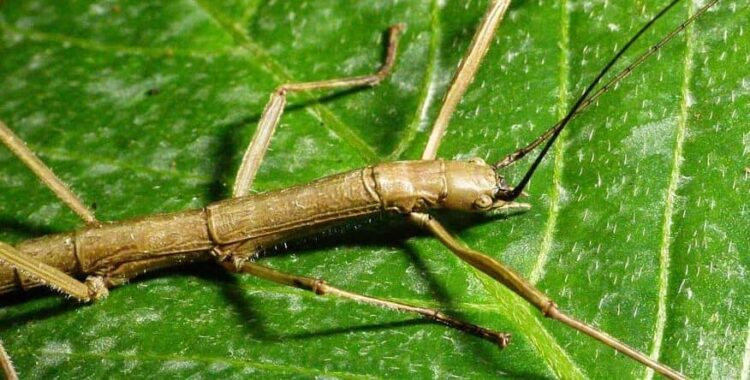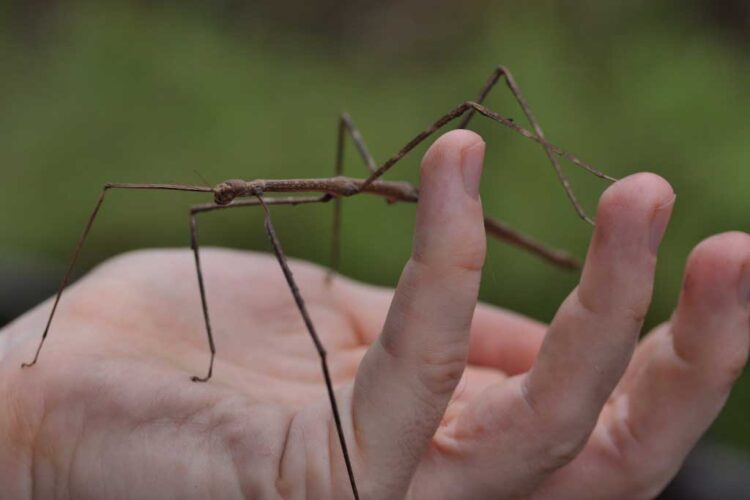Table of Contents
Are stick insects easy to look after? Fortunately, yes. That’s one of the things that makes them such fantastic pets for people who love insects. Though stick insects appear incredibly delicate, they are actually quite resilient. Just about anyone can look after a stick insect with a little bit of information and the right equipment. Just browse my site for a wealth of information.
Understand that there are thousands of recognised species of stick insects. With that many species, it should be obvious that some do not make very good pets. Others do. Stick with the most popular species and you should do fine as a pet owner. Looking after stick insects is a matter of keeping them fed and making sure their enclosures offer a habitable environment. So are stick insects easy to look after? Read on for some more detail.
For more advice and information on keeping and looking after stick insects, check out my ebook on Amazon click here
(opens in a new tab).

Choosing Your Enclosure
How you will house a stick insect is the first thing to consider before becoming a pet owner. Also note that enclosures should be designed commensurate with the number of insects you intend to keep. You might get away with a fairly small enclosure for a single insect, but you would need a larger enclosure if you added additional insects to your collection.
is the first thing to consider before becoming a pet owner. Also note that enclosures should be designed commensurate with the number of insects you intend to keep. You might get away with a fairly small enclosure for a single insect, but you would need a larger enclosure if you added additional insects to your collection.
As a general rule, an enclosure for a single insect should be roughly as wide as two times the length of an adult of that species. It should be about three times as high in order to give the insect enough room to climb and moult. If you are going to keep more than one insect, you probably don’t need any additional height. But you do need to go a bit wider so that your insects have room to spread out.
There are some special considerations when designing enclosure :
:
- Moulting – In addition to climbing to feed, stick insects need vertical space for moulting
 . That is why experts call for such high enclosures.
. That is why experts call for such high enclosures. - Temperature – Stick insect enclosures need to be kept at the right temperature. For this reason, a glass enclosure is typically better. Glass holds heat very well.
- Humidity – Stick insects are tropical insects that need plenty of moisture to survive. Thus, you have to keep your enclosure properly humidified. Sometimes this is as simple as choosing enclosure with limited ventilation or misting daily.
Though it might sound complicated, setting up a good enclosure really is not. There is a lot of information on this site explaining how to do it. If you were to buy a stick insect from a pet shop, store personnel could help you design a good enclosure.
Feeding Your Stick Insect
When people ask, “are stick insects easy to look after?”, what they are sometimes thinking of is food. They want to know how complicated it is to obtain the food. Thankfully, this is one of the easiest aspects of keeping a stick insect. Stick insects are herbivores, meaning they eat plants.
Stick insects specifically like leaves and stems. Fresh leaves are the most appetising, which is why it is advised that leaves be changed out regularly even if insects are not entirely consuming them. The trick is to find out what leaves your species of stick insect prefers.
and stems. Fresh leaves are the most appetising, which is why it is advised that leaves be changed out regularly even if insects are not entirely consuming them. The trick is to find out what leaves your species of stick insect prefers.
The most common foods for stick insects are bramble , oak, hazel, privet, rose, and ivy leaves. You can obtain food from a local nursery, a pet store, or even in the wild. If you do choose to get your food from the wild, be sure not to harvest too close to the road. You do not want leaves that have been contaminated by car exhaust.
, oak, hazel, privet, rose, and ivy leaves. You can obtain food from a local nursery, a pet store, or even in the wild. If you do choose to get your food from the wild, be sure not to harvest too close to the road. You do not want leaves that have been contaminated by car exhaust.

Placing the Food
Many stick insect owners put fresh leaves in a small bowl of water to help keep them fresh. This is not absolutely necessary, but it can increase the life of the food and provide the necessary water at the same time. Just be sure to use something solid if you choose to place leaves in water. You don’t want the container to flip over.
If you have nymphs in your enclosure, keep the water as shallow as possible. Nymphs will quickly drown if they fall in, so do what you can to avoid that as well. Some people use mosquito netting on top of the water container.
Regardless of how and where you place the food, keep an eye on it. When leaves dry out, it is time to switch. Of course, you will want to replace any food sources that have been completely consumed.
One last thing about food: do some research on your stick insect to discover what kinds of leaves it prefers. Some species are not picky while others will only eat one or two kinds of leaves. Also do not worry about poisoning your stick insect. These wonderful creatures are genetically programmed to avoid leaves that could kill them. If you put a type of leaf in your enclosure and your insect is not eating it, remove it and try something else.
Cleaning the Space
Finally, looking after stick insects requires that you keep their environment relatively clean. Unfortunately, stick insects are fairly prolific when it comes to droppings. And the more humid the enclosure, the more excrement will be left behind. The combination of humidity and excrement promotes mould and fungus.
It is a good idea to plan on cleaning your enclosure once every week to 10 days. You start by removing your insects. Let them crawl onto your hand or some sort of tool to crawl out on their own rather than forcing them. Once they have been removed, you can remove all of the substrate.
Use a sieve to clean sand, rocks, and pebbles. If the glass is dirty, feel free to wipe it down with paper towel and water. Do not use any harsh chemicals inside the glass as these could be dangerous to your insects. When everything is clean and dry, replace the substrate and introduce your stick insects back into their clean environment. Clean and refill the water dish as well.
That’s really about all there is to it. Are stick insects easy to look after? Absolutely. If you learn what to feed them and how to properly regulate the environment in the enclosure, you should have no problem at all. You might even be able to keep your stick insects alive for up to a year or more. That is pretty impressive, given that the average lifespan in the wild is less than six months.

